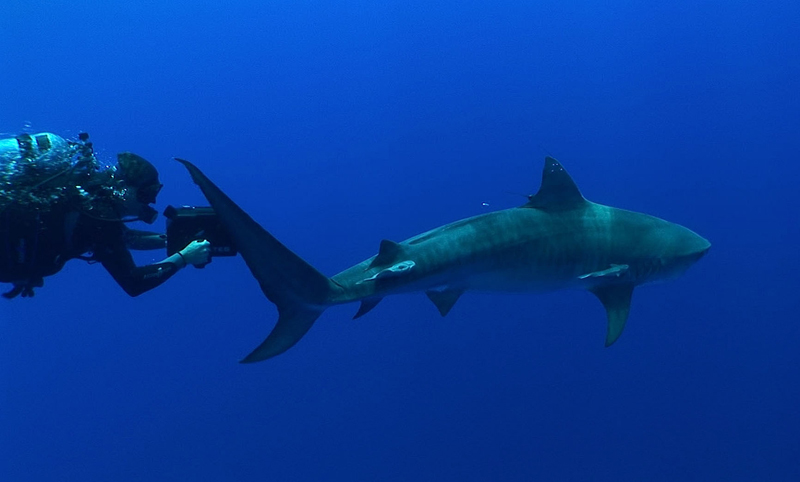Recent News
Whale researcher using aerial footageTuesday, May 08, 2018
Whale researcher Andrew Stevenson will use unique aerial footage for a follow-up to his acclaimed documentary Where the Whales Sing.
Parrotfish Checkup
Wednesday, May 02, 2018
When new fish arrive at BAMZ, they must first undergo a minimum of 30 days quarantine in order to diagnose any marine parasites which, if left untreated, can infect the other inhabitants of the aquarium hall tanks.
Sheldon the baby Loggerhead turtle
Tuesday, May 01, 2018
This is Sheldon, a juvenile loggerhead turtle.
A Lucky resident of North Rock
Friday, April 27, 2018
If you have recently visited the Bermuda Aquarium, Museum and Zoo (BAMZ), you may have noticed two new additions to the North Rock habitat; a green turtle and a rainbow parrot fish.
Aming: Likely The Same Shark Being Seen
Wednesday, April 25, 2018
Following the recent shark sightings, local expert Choy Aming said he is “almost positive that the same hammerhead is being spotted repeatedly” and explained that hammerheads “are quite docile and are not really a threat to people” and “noted that this may be the only hammerhead you see in Bermuda in your life.”
About
GovernanceAbout Us
Newsletter
Latest News
Gift & Bookstore
Contact
General Inquiries
info@bzs.bm
Latest News
All the latest updates and news from the Bermuda Aquarium, Museum, and Zoo, one of Bermuda's leading visitor attractions!
Andy — a tiger shark tagged in Bermuda by scientists from Nova Southeastern University’s [NSU] Guy Harvey Research Institute [GHRI] in 2014 — is now the longest tracked tiger shark on record.
“Travelling approximately 37,565 miles off the eastern coast of the United States and around Bermuda, the Bahamas and Turks and Caicos, Andy is now the longest tracked tiger shark on record and shows no sign of slowing down. He’s been going for more than 1,240 days,” GHRI said.

“We are delighted with how long Andy has reported data, which has tremendous value for us as researchers,” said Mahmood Shivji, Ph.D., the director of NSU’s GHRI and a professor in the university’s Halmos College of Natural Sciences and Oceanography. “This amazing, nearly three and a half year track is revealing clear repeated patterns in the shark’s migrations between summer and winter.”
More than 150 sharks, including tigers, makos and oceanic whitetips, have been tagged by the GHRI in the last decade. The data collected is used to study the migration patterns of these incredible creatures. Andy and many other GHRI tagged sharks can be followed online in near real-time at www.GHRItracking.org.
“Tracking the migration patterns of sharks, like Andy, for extended periods of time allow us to better understand their behavior and habitat utilization, resulting in better knowledge on how to manage the species,” said Guy Harvey Ocean Foundation [GHOF] Chairman Guy Harvey, Ph.D.
According to a paper published in the most recent ICES Journal of Marine Science by Shivji and his colleagues, tiger shark migrations are heavily influenced by a shark’s physical characteristics [i.e. size, age] and environmental variations [i.e. water temperature, prey availability].
“This study, funded by the Guy Harvey Ocean Foundation, NSU’s GHRI, the Shark Foundation [Hai Stiftung] and the Bermuda Shark Project, reveals not only the environmental factors driving these massive migrations by tiger sharks but also highlights how the different age groups behave,” the Institute said. “This information could prompt fisheries managers to reevaluate how best to protect this near-threatened species.


